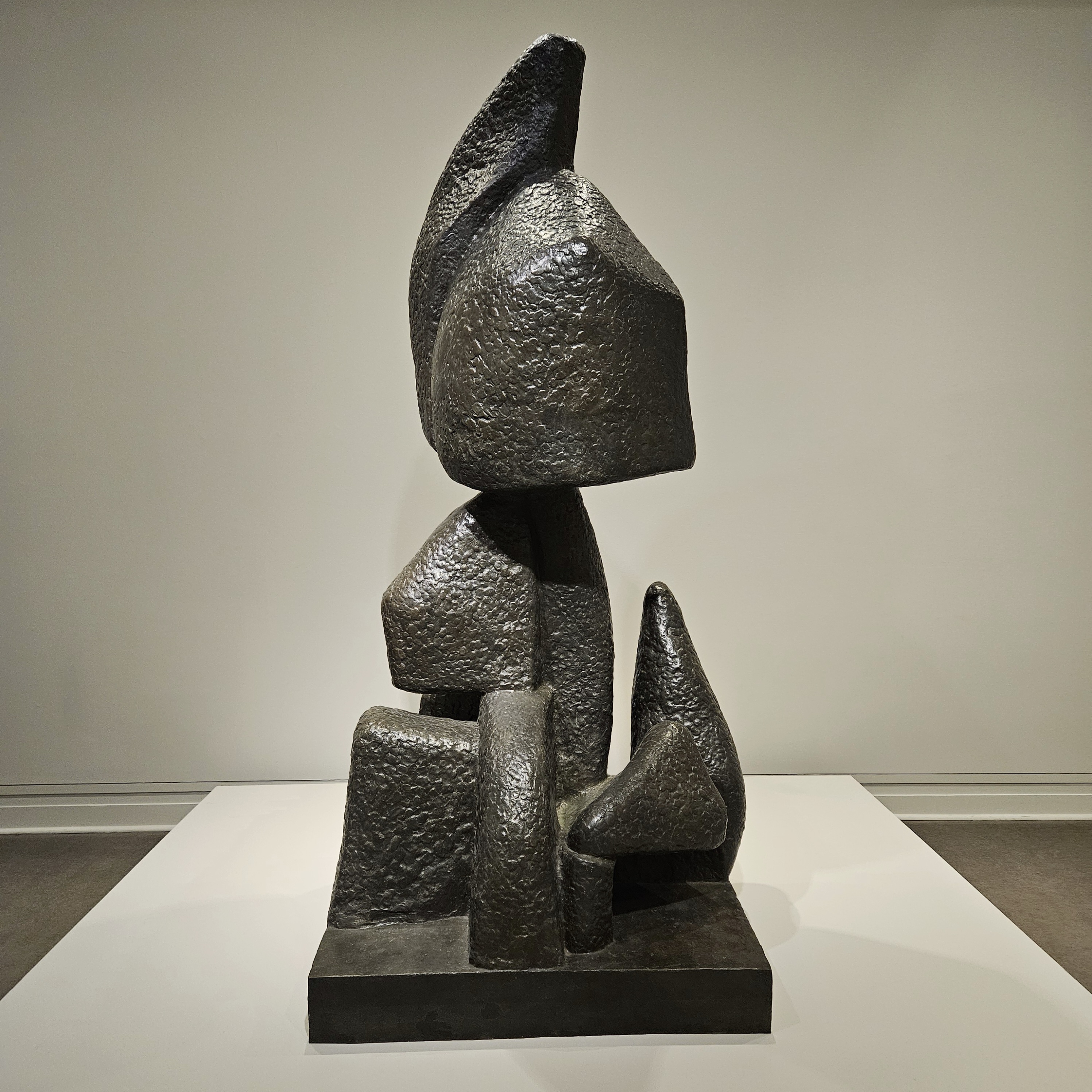
Composition
Otto Freundlich
German — 1933, cast after 1961
An avante-garde left-wing Expressionist, Otto Freundlich dreamed of a social utopia and portrayed the harmony of disparate, irregular shapes in his artwork in an evocation of this dream. Freundlich was active in Dadaist circles and contributed to the radical newspaper Die Aktion - he was well-known and influential in the French and German modern arts scenes to such an extent that he became the literal poster child of “Degenerate Art” when the Nazi Party came to power, with his sculpture Der Neue Mensch (New Person) (1912; destr.) appearing on the cover of the exhibition catalogue for the Entarte Kunst (Degenerate Art) exhibition of 1937.
While Freundlich spent his life in dedication to the ideals of a society comprised of “a community of forces”, his position as a left-wing modern artist of Jewish birth made him a target of the Nazi regime, and in 1943 he was murdered at Maidanek concentration camp. In addition to his broader goals of societal harmony being left unfulfilled at his death, Freundlich’s more immediate, material goals of casting some of his sculptures - including Composition - in bronze were also left incomplete, and Composition survived only as a plaster cast.
Freundlich’s widow, the artist Jeanne Kosnick-Kloss, survived the Holocaust and her internment in Gurs and returned to Freundlich’s studio, which had been saved from destruction thanks to intervention from Picasso. Kosnick-Kloss continued with her own work, but she also endeavoured to preserve the work of her husband and finish what he had started. She undertook not only the administrative work of donating Freundlich’s work to the Tavet-Delacour Museum, but created the Association of Friends of Otto Freundlich with the help of her friends and peers Hans Arp, Sonia Delaunay and René Drouin. Together, this artist’s collective finished what Freundlich was denied the chance to do himself, and cast his remaining plaster sculptures in bronze.
Bibliography
- Leinz, G. (2003). Freundlich, Otto. Grove Art Online. https://www-oxfordartonline-com.i.ezproxy.nypl.org/groveart/view/10.1093/gao/9781884446054.001.0001/oao-9781884446054-e-7000029895
- Segal, J. (2016). National and Degenerate Art: The Third Reich. In Art and Politics: Between Purity and Propaganda (pp. 45–60). Amsterdam University Press. https://doi.org/10.2307/j.ctt1d4tzdz.6
- (2011, October 31). Freundlich, Otto. Benezit Dictionary of Artists. https://www-oxfordartonline-com.i.ezproxy.nypl.org/benezit/view/10.1093/benz/9780199773787.001.0001/acref-9780199773787-e-00068155
- Edda Maillet: Jeanne Kosnick-Kloss. Biography nach Schriften, Notizen und anderen Dokumenten. In: Reichard Gallery (Hrsg.): Jeanne Kosnick-Kloss. Arbeiten 1930 – 1950. Frankfurt am Main 1993, S. 12–15.